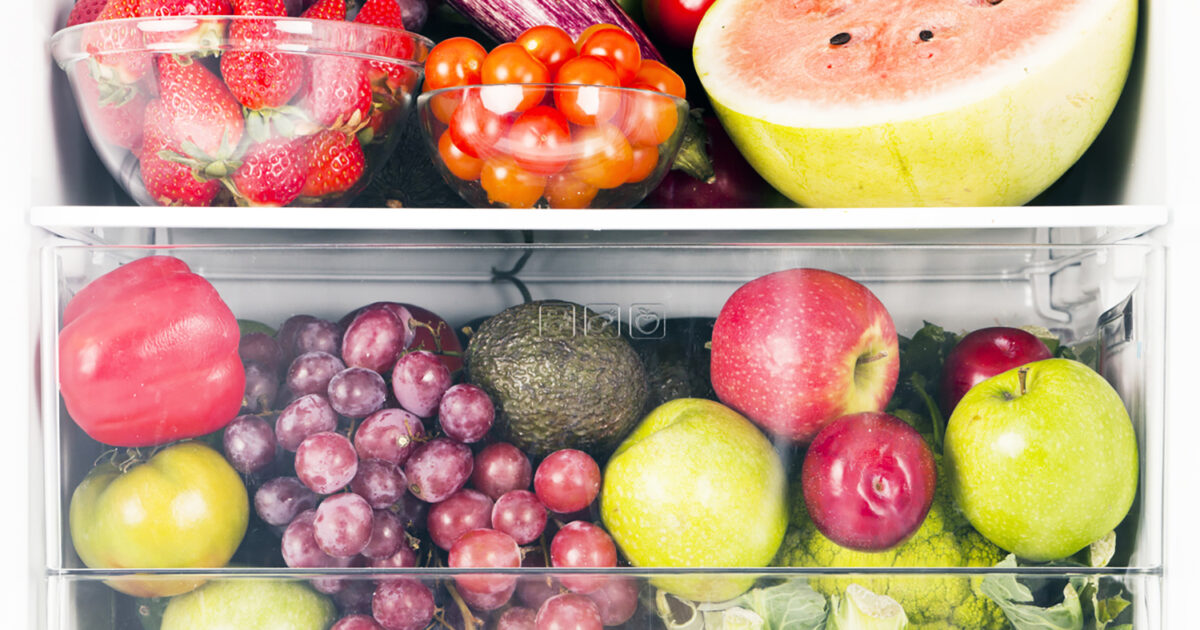Nothing compares to the taste of a ripe peach in summer or a juicy orange in winter. The fruit It is not just part of a healthy diet, it is a source of enjoyment, vitamins and colors in our daily lives.
The problem is that fruits are often altered faster than we would like. And somewhere there begins the big question: what fruit are they getting into the refrigerator And how do we keep them right?
Fruit maintenance is not only a matter of temperature but also time, moisture, ventilation and – yes – the right “co -host” on the shelf of the refrigerator. Let’s see what is going on and how we can expand their freshness without sacrificing taste and aroma.
Our refrigerator is a valuable ally in the effort to maintain food, but not all fruits are friends of the cold environment. Incorrect storage can alter their taste, texture, and even nutritional value.
The first basic principle is to know which fruits with low temperature and which is not. Banana, papaya, mango and pineapple, due to their tropical origin, produce enzymes activated at temperatures below 12 ° C.
If they enter the refrigerator, they bruise or get a “bark” that blurs the taste. On the contrary, apples, pears, cherries and grapes evolve slowly their ripening under cooling, lengthening their life.
Fruits that ripen outside the fridge and can then enter:
These are usually what they need to complete their ripening at room temperature. Once they are fully matured, you can transfer them to the fridge to extend their lives.
Bananas: Never in the fridge before they are fully matured, as they will tan and their texture will become altered. Once they mature, you can put them on, although their peel will tan, the flesh will remain ok for a few days.
Avocado: They ripen outside the fridge. Once softened, enter the fridge.
Tomatoes: Yes, it’s fruit! The refrigerator alters their taste and texture. Store them at room temperature and consume them quickly.
Peaches, nectarines, apricots, plums: Leave them out of fridge until they ripen and tender. Then they can get in for a few days.
Mango, papaya, pineapple: They mature better outside the fridge.
Fruits that should never get into the fridge:
Citrus (oranges, lemons, grapefruit): They prefer room temperature. The fridge can make them dry and lose their aroma.
Watermelon and melon (whole): The refrigerator reduces their antioxidants and alters the taste. Once cut, yes, they must enter the refrigerator in a sealed container.
Fruits that should always enter the fridge:
These are the sensitive to Ethylene and those best maintained at low temperatures.
Berries (strawberries, raspberries, raspberries, blueberries): They are very sensitive. Wash them just before consuming them and store them in a shallow container, paved with kitchen paper to absorb moisture.
Cherry: Store very well in the refrigerator.
Grapes: Wash them just before eating them. Are best kept in a bag in the refrigerator.
Apples and pears: They can mature out of the fridge, but if you want to keep them for weeks, put them in the refrigerator. Caution: They produce a moderate amount of ethylene, so do not put them next to sensitive fruits.
Salad leaves and herbs: Yes, they are not fruits, but we often store them with them. They are best kept in the vegetable drawer, wrapped in kitchen paper.
Little maintenance secrets
- Do not put all the fruits together: Some emit ethylene (eg apples, bananas) that accelerates the maturation of the rest. Divide them!
- Leave the laundry: Washing before storage can cause moisture, which favors mold growth.
- Use kitchen paper: In strawberries or bilberries, paper absorbs moisture and prolongs their lives.
- Do not rush to cut: Cut fruits are altered much faster, even if they are in the refrigerator. If you cut them, keep them airtight.
On which shelf of the refrigerator are they entered
The coldest areas (lower shelves, near the back of the refrigerator) are suitable for vulnerable fruits, such as strawberries and cherries. Drawers with moisture adjustment are ideal for apples, pears and grapes. Do not put fruit on the door – the temperature often changes due to openings.
